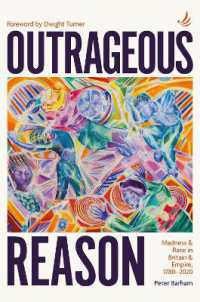- ホーム
- > 洋書
- > 英文書
- > Nature / Ecology
Full Description
Elgar Advanced Introductions are stimulating and thoughtful introductions to major fields in the social sciences, business and law, expertly written by the world's leading scholars. Designed to be accessible yet rigorous, they offer concise and lucid surveys of the substantive and policy issues associated with discrete subject areas.
This updated second edition of the Advanced Introduction to Environmental Impact Assessment offers an up-to-date exploration of the current theory and practice of Environmental Impact Assessment (EIA), a crucial tool for evaluating and mitigating the impacts of development projects on the environment. Angus Morrison-Saunders provides an overview of the key concepts, principles, and methodologies of EIA, with a focus on recent developments, emerging trends, and best practices in the field.
Key Features:
Fresh analyses of how environment and development intersect in EIA
Exploration of the fundamental ideas promoted by the pioneers of EIA
Revised content on international best practice EIA principles and how they apply today
Reflections on the increasing need to adopt a holistic, sustainability-oriented approach to EIA.
With accessible style, comprehensive coverage, and a practical approach, this book is an essential resource for students, scholars, and practitioners in environmental studies, environmental governance, policy and regulation, urban planning, and related fields who want to deepen their understanding of EIA.
Contents
Contents: Preface to the second edition vii Preface to the first edition viii PART I OVERVIEW AND CONTEXT 1 Introduction: setting the scene 2 Forms of EIA 3 Back to the beginning - EIA and the National Environmental Policy Act 1969 (US) 4 A brief reflection on the goals and purpose of EIA PART II GENERIC EIA PROCESS COMPONENTS 5 EIA and decision-making 6 Screening and scoping 7 Prediction, assessment and mitigation 8 Review, approval decision and EIA follow-up PART III ABOUT DEVELOPMENT 9 Spectrum of development and design considerations 10 Alternatives and mitigation 9PART IV ABOUT ENVIRONMENT 11 Representing environment 12 Engaging with stakeholders PART V BRINGING DEVELOPMENT AND ENVIRONMENT TOGETHER 13 Science, uncertainty and adaptive management in EIA 14 Holistic and cumulative impact assessment PART VI CLOSING REMARKS ON EIA 15 Conclusions References Index







